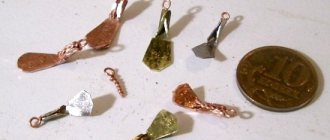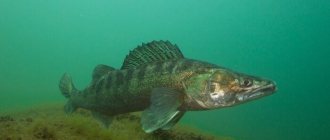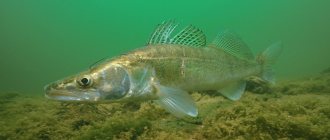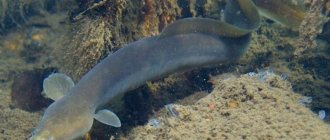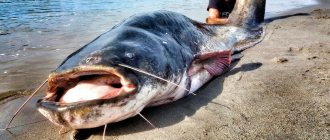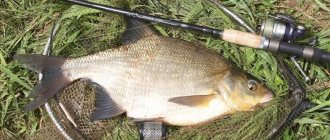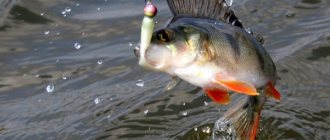When does pike perch begin to spawn?
Pike perch begins to spawn when the average daily air temperature is about 15 degrees. In this case, the aquatic environment should warm up to 14 degrees. In the middle zone, this period occurs in mid-May. In the southern regions - in the second half of April. In reservoirs of northern latitudes, the “fanged” one begins to spawn at the beginning of summer.
Pike perch, which lives in the reservoirs of the southern regions, is ready for procreation already in the fourth year of life. The predator of northern latitudes becomes sexually mature only at 6 years. This factor explains the relatively small number of “fanged” in the waters of the north.
After the ice melts, the pike perch actively feeds, trying to stock up on fat reserves for the spawning period. As soon as the water warms up to 12 degrees, it begins to gather in flocks and moves to the places where spawning will occur. In search of suitable areas, the fish is able to cover distances of tens of kilometers. Semi-anadromous individuals living in sea estuaries often travel a path longer than 200 km.
While moving to the spawning grounds, the predator continues to feed heavily and is well caught on artificial baits:
- twisters and vibrotails 7–10 cm long;
- foam fish (mandulas);
- wobblers of the “fet” and “shad” classes;
- oscillating spinners of the castmaster type.
During this period, the “fanged” one can also be caught with a donk or an elastic band. Roach, gudgeon or bleak no more than 10 cm long are used as live bait.
River fish pike perch
Freshwater forms of the predator determine the maximum size and basic size of the entire generic population. To date, four species have been classified, living in rivers, reservoirs, flowing ponds and lakes in Russia, Europe, Asia and North America.
Common pike perch
The largest representative of the family (lat. Sander lucioperca), which is widespread in domestic reservoirs and successfully competes for food with other large predators: pike, catfish, burbot.
The average size of individuals in catches is 35-60 cm with a weight of 1-4 kg. But this is far from a record - the weight of the largest pike perch reaches 20 kg with a length of 130 cm. And now in the Kuban, Dnieper, Kama, Oka, Don, trophy specimens weighing 6-10 kg are often encountered.
The main color of the river pike perch is represented by gray-green shades, darker in the back area. 8-12 black-brown vertical stripes of irregular shape are scattered throughout the body. On the surface of the dorsal fins, separated by a small gap, there are many dark spots that form symmetrical dotted lines.
Volzhsky
The longest river in Europe, the Volga, is home, in addition to the ordinary form of the predator, to a local species (lat. Sander volgensis), which has two equivalent names: Volga pike perch and bersh. This perch taxon is characterized by historical dwarfism (dwarfism), the absence of large fangs, a shortened snout and larger scales (70-75 rows). Dark vertical stripes (8 pieces) contrast well with the main gray-green color and are distinguished by their regular shape.
The maximum size of the bersh does not exceed 3-3.5 kg with a length of 45-50 cm. Most of the livestock are represented by medium-sized individuals 0.6-1.0 kg (20-35 cm). This significantly complicates the survival of the species due to fierce competition for food (fry 5-10 cm) with numerous perch.
Canadian
This species (Sander canadensis) is common in fresh water bodies of North America. It is especially abundant in Canada, where it has successfully acclimatized in flowing lakes and rivers of the Atlantic Ocean basin: Erie, Bay du Nord, Gander, Main River, Restigouche, Champlain. The yellowish-greenish body is covered with numerous dark spots. Due to its ability to completely merge with the bottom, the fish is often called sandy pike perch. It grows up to 3-4 kg, but smaller individuals weighing 1-2 kg prevail in populations. Lives up to 17-18 years.
To learn more:
Types of carp: mirror, koi and others
Lightfeather
A large North American species (lat. Sander vitreus), living in rivers and lakes of Canada and throughout the United States. The fins are painted in delicate golden tones. The main colors of the lateral part of the body are represented by chestnut and amber-lemon shades, which served as a pretext for the emergence of an alternative name - yellow pike perch. The back is dark with an olive-brown tint. The fish grows up to 10-11 kg with a length of over a meter. It is distinguished by a wide variation in the timing of puberty: for the southern regions - 2-4 years, for the northern - 8-10.
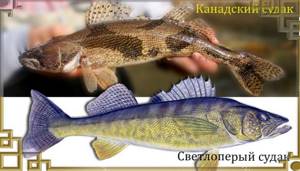
Where does pike perch spawn?
Not every area of the reservoir is suitable for spawning pike perch. For spawning, the predator tries to choose places with a sandy or clayey substrate, where the depth is from 1 to 3 m. This fish never lays eggs in soft muddy soil.
In lakes and reservoirs, the “fanged one” chooses coastal shallow waters and shallow reaches for spawning. On rivers, spawning grounds are:
- flood lakes;
- shallow erics;
- bays with a hard bottom.
Having reached the spawning grounds, the fish are divided into small groups, each of which contains one female and 2-4 males. Before laying a clutch, predators look for the most suitable place where the following are present at the bottom:
- driftwood;
- shell rock;
- tree branches falling into the water.
Having found a suitable point, the female uses her pectoral fins to clear it of debris. Together with the males, she digs a kind of nest in the ground, which is a hole with a diameter of 15–30 cm and a depth of up to 20 cm. The perimeter of the hole is lined with branches and stems of last year’s grass.
The female lays from 60 thousand to 1 million eggs in the depression made (depending on the size of the fish). Having completed the process, she immediately goes into the depths, accompanied by several males.
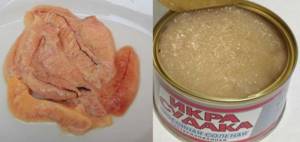
The clutch is fertilized by only one, the largest male. He remains near the nest for 7–10 days to protect his offspring from the encroachment of other underwater inhabitants.
During spawning and the next two weeks, pike perch does not feed. A bite can only occur if the bait passes in close proximity to the nest and the predator perceives it as a threat to its offspring. In such a situation, the fish often catches the lower jaw.
Description of the species
Almost all perciformes prefer to hunt their own kind (roach, gudgeon, crucian carp, sabrefish, juvenile carp and bream) and do this with great passion, determination and patience. This can be either an active search for a victim or waiting for her for many hours in an ambush-shelter. And if, when looking at a perch, doubts may still arise whether it is a predator or not, then the appearance of the pike perch clearly indicates its carnivorous nature:
- an elongated flat head with several rows of sharp teeth;
- large, closely spaced fangs;
- elongated muscular body, laterally compressed;
- the line of the mouth shifted beyond the far border of the eyes for a wide opening of the jaws;
- 80-90 rows of small dense scales of the ctenoid type (with a prickly ridge of spines along the edges);
- anterior dorsal fin with hard rays;
- gill cover with sharp serrations.
To learn more:
Tench: description of fish, habitats, spawning and fishing methods
The fish is characterized by a camouflage color with vertical stripes, a light belly, and darker sides and back. The specific color scheme depends on the type and living conditions.
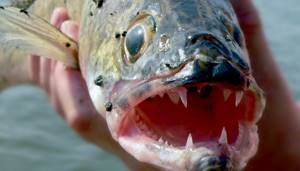
When does spawning of pike perch end?
Under favorable weather conditions, the spawning period of pike perch lasts about ten days. In the event of a sudden cold snap or heavy rainfall, the fish may interrupt the breeding process. Spawning resumes only after the water temperature has returned to 14–16 degrees. During a cold, rainy spring, some individuals do not have time to spawn, and the eggs die.
In the middle zone, pike perch spawning ends in the last days of May. The fanged predator of the southern regions completes the breeding process at the end of April. In northern reservoirs, the end of pike perch spawning occurs in mid-June.
The predator begins to respond to fishing baits two weeks after spawning. During this period you can catch him:
- for silicone baits;
- on a foam fish;
- for oscillating lures of the “jig” class;
- for tail spinners of various modifications.
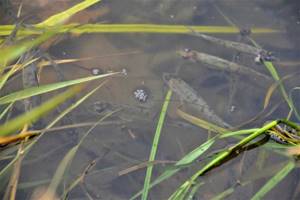
During daylight hours, fishing is carried out at a depth of 3–6 m. At night, the predator goes out to feed in shallow water areas with a depth of up to 1.5 m, where it can be caught using floating shad-class wobblers 7–9 cm long.
The increased feeding activity of the predator after spawning lasts about ten days. Then the bite begins to gradually fade. In mid-summer, pike perch can rarely be caught during daylight hours. In warm water, it comes out to feed only at dawn and in the dark.
How does pike perch bite? Bite Features
The peculiarity of the pike perch’s bite is that it holds the grabbed bait in its mouth for some time, and then begins to swim, swallowing its prey as it goes.
Therefore, experienced fishermen first try to cast the line a little, and only then hook it. Naturally, the above applies to cases when Zhiwiec serves as bait.
3 ways to improve your fish bite!
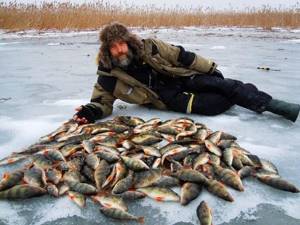
Over 15 years of active fishing, I have found many ways to improve the bite, and here are the most effective:
1. Bite activator . This pheromone additive attracts fish most strongly in cold and warm water. The Fish Hungry bite activator has proven itself to be excellent - Read more…
2. Tackle with increased sensitivity . You should first familiarize yourself with the features of using a particular type.
3. Pheromone baits . They attract the attention of fish, stimulate hunger and cause a schooling reflex, which allows you to collect a lot of fish in one place.
You can get the rest of the secrets of successful fishing for free by reading my other materials on the site.
3 ways to improve your fish bite!
Over 15 years of active fishing, I have found many ways to improve the bite, and here are the most effective:
1. Bite activator . This pheromone additive attracts fish most strongly in cold and warm water. The Fish Hungry bite activator has proven itself to be excellent - Read more…
2. Tackle with increased sensitivity . You should first familiarize yourself with the features of using a particular type.
3. Pheromone baits . They attract the attention of fish, stimulate hunger and cause a schooling reflex, which allows you to collect a lot of fish in one place.
You can get the rest of the secrets of successful fishing for free by reading my other materials on the site.
Pike perch is very cautious and immediately reacts to noise, so when catching it you need to take this into account and take appropriate measures. Silence is required to catch this timid fish.
When he is actively biting, the pike perch becomes indiscriminate and grabs everything that moves. This is the moment when your Fishing has every chance of being successful.
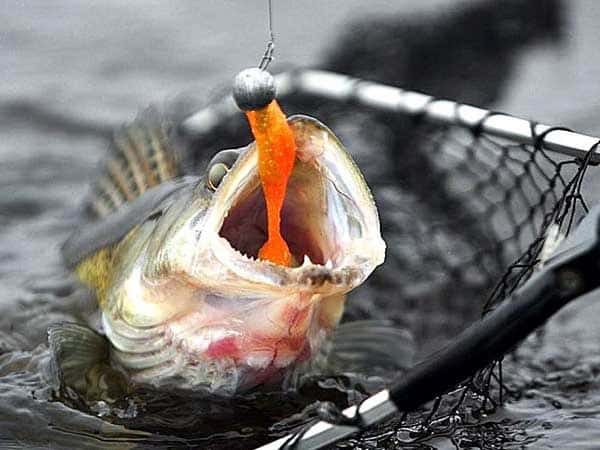
Zander spawning period
The fisherman must take into account that the timing of the spawning period of pike perch largely depends on the region where the predator lives:
- in the Moscow region, the predator begins to spawn on May 10–15 and ends towards the end of the month;
- in the Leningrad region, pike perch spawning lasts from May 25 to June 10;
- in the Chelyabinsk region, the predator goes to spawn in early summer and finishes spawning on June 15–20;
- spawning of pike perch in the Rostov region begins at the end of April and lasts until May 10;
- in the Krasnodar Territory, the “fanged one” goes to spawning grounds in the first half of April and leaves the coastal shallows closer to the middle of the month;
- in the Urals, pike perch spawning begins on May 20 and ends in early June;
- in the middle zone, the fanged predator leaves for spawning in mid-May and completes the process of procreation by the end of the last spring month;
- In Belarus, pike perch spawning begins on May 5–10 and continues until the 20th.
In order not to undermine the pike perch population in the reservoir, anglers should refrain from catching the predator during the spawning period. Moreover, at this time there is a seasonal ban associated with the restriction of the use of spinning gear.

